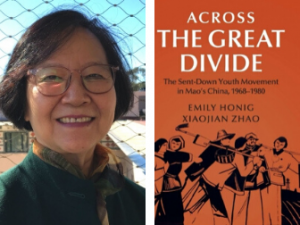From 1968 to 1980 the People’s Republic of China began a program that would send 17 million urban young people to rural communities for “re-education” — by laboring on village collectives or state farms.
The plight of what are known as the “sent-down youth” has been chronicled in books, films, art exhibits and more. Those accounts, however, largely centered on the victimization of the urban youth.
But a new book, “Across the Great Divide: The Sent-Down Youth Movement in Mao’s China, 1968-1980” (Cambridge University Press) provides a strikingly original assessment of Mao Zedong’s plan to ease unemployment in the cities and to provide labor to impoverished communities in far-flung regions of China. Drawing on previously unseen archives from remote rural areas, Xiaojian Zhao, a UC Santa Barbara professor of Asian studies, and Emily Honig, a professor of history at UC Santa Cruz, show how local officials, the youths and their parents worked to undermine the defining feature of the Cultural Revolution.
“The previous literatures are all from an urban perspective,” said Zhao, who at 16 was sent from Shanghai to a distant village in Jiangxi province, where she lived for seven years.
“Across the Great Divide” rewrites the history of the sent-down youth from a different angle. Rather than simply a tale of exploitation and victimization, Mao’s grand scheme is revealed as a failure in the documents that Zhao and Honig discovered in county archives in remote provinces.
Click the link below to read the full article.







